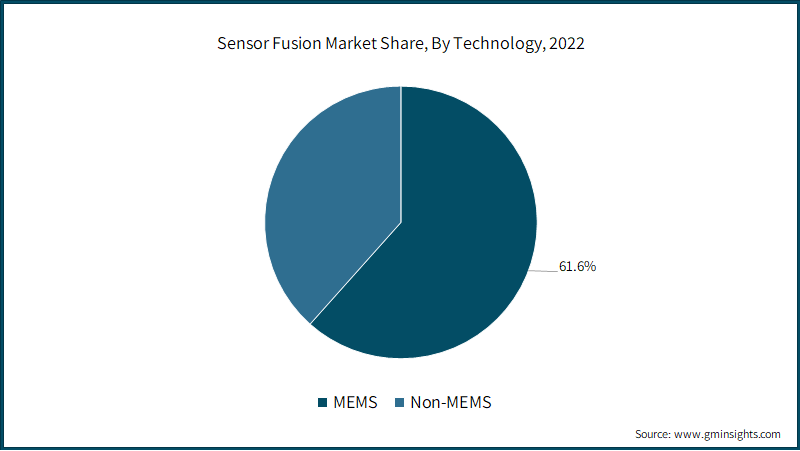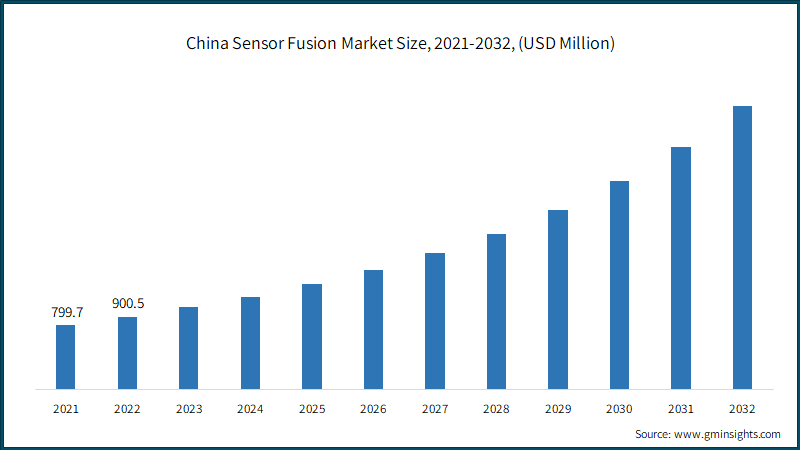Home > Semiconductors & Electronics > Sensors > Sensor Fusion Market
Sensor Fusion Market Analysis
- Report ID: GMI6902
- Published Date: Oct 2023
- Report Format: PDF
Sensor Fusion Market Analysis
Based on end use, the market is segmented into consumer electronics, automotive, home automation, medical, military, and industrial. The automotive segment dominated the market with a revenue of over USD 1.5 billion in 2022 and is expected to register a CAGR of about 15.5% during the forecast period.
- It is witnessing robust growth in the sensor fusion industry due to its increasing demand for Advanced Driver Assistance Systems (ADAS) and autonomous driving technologies. The growth is driven by the imperative to enhance road safety, improve vehicle efficiency, and provide a more comfortable driving experience.
- By integrating data from various sensors, such as LiDAR, radar, cameras, and ultrasonic sensors, sensor fusion systems enable vehicles to perceive their surroundings accurately, make real-time decisions, and react to dynamic driving conditions.
- Consequently, the automotive industry is embracing sensor fusion to develop safer and smarter vehicles, with the goal of achieving fully autonomous driving capabilities.

Based on technology, the market is segmented into MEMS and non-MEMS. The MEMS segment held a market share of over 61% in 2022 and is anticipated to grow over the forecast period.
- Micro-Electro-Mechanical Systems (MEMS) technology has gained prominence in the sensor fusion market due to its miniaturization, cost-effectiveness, and versatility. These tiny, integrated devices combine mechanical and electrical components on a silicon chip, enabling the production of compact & lightweight sensors.
- MEMS sensors including accelerometers, gyroscopes, and magnetometers offer precision and reliability, which makes them ideal for capturing environmental data. Their low power consumption makes them suitable for battery-powered applications, and their scalability allows integration into diverse systems. As a result, MEMS technology has become a cornerstone in the global market, enabling the creation of sophisticated and efficient multi-sensor systems for applications such as smartphones, wearables, drones, and autonomous vehicles.

Asia Pacific held a significant market share of over 34.5% in 2022. The region's expanding manufacturing sector, driven by consumer electronics & increased demand for automotives. The expanding consumer electronics industry, driven by growing middle-class population and increased smartphone adoption, has spurred the demand for sensor fusion technologies in devices such as smartphones, wearables, and IoT gadgets. The regional automotive sector is witnessing rapid technological advancements, with an emphasis on ADAS and autonomous vehicles, which heavily rely on sensor fusion for safety & navigation. Governments in the region are also fostering innovations and investments in emerging technologies, further propelling the adoption of sensor fusion solutions across industries.

